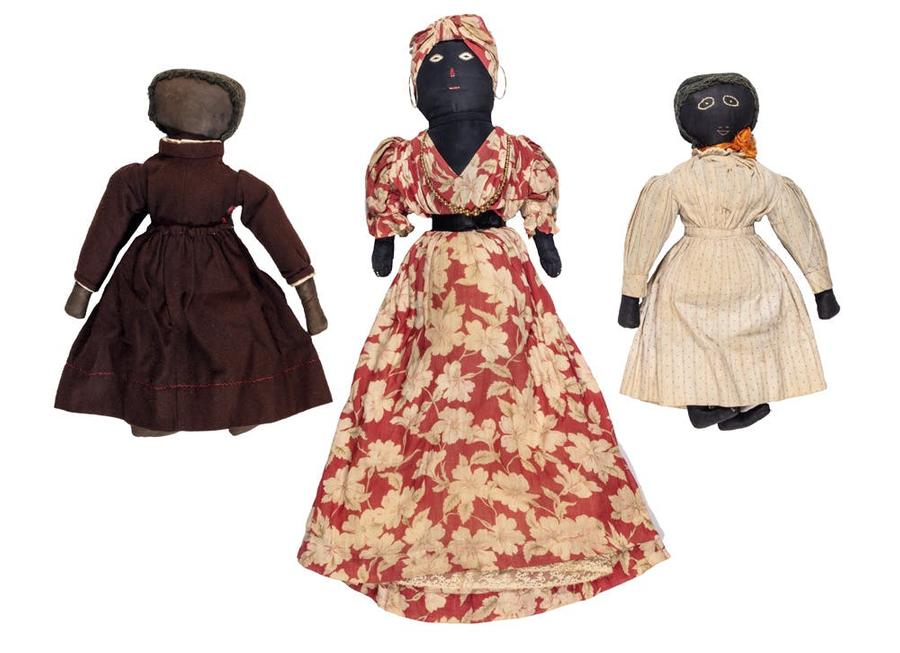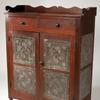New-York Historical Society Exhibition Explores Handmade Black Dolls Through the Lens of Race, Gender, and History
- February 03, 2022 14:02




The New-York Historical Society presents a landmark exhibition that explores handmade Black dolls through the lens of race, gender, and history. On view February 25 – June 5, 2022, Black Dolls immerses visitors in the world of dolls, doll play, and doll making while examining the formation of racial stereotypes and confronting the persistence of racism in American history. The exhibition examines how these toys serve as expressions of resilience and creativity, perseverance and pride, and love and longing. They provide a unique view of the history of race in America, revealing difficult truths and inviting visitors to engage in the urgent national conversation about the legacy of slavery and racism.
“While the names of the women who created these dolls are largely unknown, every stitch that they sewed into place is invaluable evidence of their lived experience, as well as a reflection of the larger historical forces of slavery and its legacy,” said Dr. Louise Mirrer, president and CEO of New-York Historical. “We’re exceptionally proud to present this eye-opening exhibition and are grateful to all the lenders who have made it possible, led by Deborah Neff.”
Black Dolls features more than 200 objects, including 110 handmade dolls from the private collection of Deborah Neff, commercially produced 20th-century dolls, textiles, books, games, sewing tools, and ephemera from New-York Historical and other collections. Period photographs from the Neff Collection provide important context. Starting with dolls that reflect the horrors of slavery, the exhibition moves through Reconstruction, Jim Crow, and the beginnings of the civil rights movement of the 1960s. Dolls with detailed finery, often made from ingeniously repurposed sewing basket scraps, push back against negative racial stereotypes, while photographs that show white children playing with Black dolls and Black children holding white dolls complicate the narrative. The exhibition also depicts the rise of factory-made dolls and the growing emphasis on positive representation they embodied, as the slogan of the National Negro Doll Company stated: “Negro Dolls for Negro Children.”

Objects from the Deborah Neff collection include seven topsy-turvy dolls, which consist of a Black and white doll conjoined at the waist; an elegant doll in mid-19th century dress featuring hair made from imitation fur; a schoolboy crafted from remnants of materials, such as a mattress cover; a doll made with high-quality materials that highlights the intricate fashion of the late 19th century; and a dapper and well-dressed man in a three piece suit.
From a private collection are three dolls made by Harriet Jacobs, who escaped from slavery and physical violence. Jacobs made these dolls between 1850-1860 for the white children of the Willis family of New York, where she worked after her escape. In Harriet Jacobs’ autobiography, published in 1861, she recounts her desperate flight from slavery and her years spent in hiding—where she used sewing to relieve her loneliness—until she could reunite with her children in the north. A copy of Jacobs’ Incidents in the Life of a Slave Girl is on view.

Three dolls from the 1930s on display were made by Leo Moss, a handyman in Macon, Georgia, who repurposed commercial dolls by remodeling their hair, features, and facial expressions and tinting their skin with boot dye until they resembled himself, family members, or neighbors.
Also on view is Addy Walker, the first Black character that American Girl added to its collection in 1993 to educate young children about American slavery and emancipation. Addy’s braided hair and West African cowrie shell necklace are memorable symbols of Black culture. She is accompanied by her own cloth doll, Ida Bean, and a quilt that was modeled on an 1854 family album quilt by Black quilter Sarah Ann Wilson.

Today, Black doll collectors continue to forge communities, both in person and online, to celebrate their shared interest. The exhibition ends with a slideshow featuring photos of contemporary doll collectors, including one of artist Betye Saar with her collection.
Black Dolls is curated by Margi Hofer, vice president and museum director, and Dominique Jean-Louis, associate curator.
Online Conversations and Family Programs
A series of online conversations, hosted by the Center for Women’s History, will take place throughout the exhibition’s run, providing in-depth looks at the themes explored in Black Dolls. Learn more at nyhistory.org.









100x100_c.jpg)










